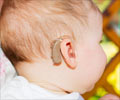Last Updated on May 30, 2019
How do you Prepare Before Stapedectomy?
- Make plans for the surgery and ensure things at home are taken care of and you have someone to drive you back home after the operation
- The procedure is usually done in the hospital or clinic
- Stop smoking 4-6 weeks prior to the procedure
- Discuss your regular medications with your doctor as some of these, such as aspirin and warfarin have to be stopped a few days before surgery to reduce risk of bleeding during and after surgery
- Routine blood tests and urine tests will be done to look for any underlying condition that has to be corrected before surgery
- You will also need a chest X-ray and undergo electrocardiography (ECG) to assess lung and heart status, respectively, to determine your fitness for surgery
- An anesthetist will assess you clinically with the results of your investigations and declare whether or not you are fit for surgery
- You will be advised to get admitted either on the morning of surgery or the night before surgery where you will be assigned a room/ward
- Follow your doctorís instructions regarding fasting and not taking anything orally before surgery as well as any other specific instructions
- Before being taken to the operating room, you will be required to change into a hospital gown and then wheeled into the operation theater
What Happens During Stapedectomy?
- Once you are taken to the operating room, you will be shifted to the operating table. The operating table will have overhead lights to make the operation site clearly visible to the surgeon and the room will have monitors to check your heart and breathing during the procedure
- You will be given a local or general anesthetic before starting the surgery. A local anesthetic will numb only the area of the body that is going to be operated so that you donít feel any pain. In addition, you may be given a sedative to calm you during the operation. A general anesthetic will put you to sleep and relax your muscles and you will not feel any pain during the procedure
- Using a powerful microscope, the surgeon will look inside the ear and make a tiny cut in the ear canal close to the eardrum and gently raise the eardrum to get access to the middle ear
- The surgeon will check the three middle ear ossicles to ensure that the stapes is the cause of the hearing loss
- Usually a laser is employed to vaporize parts of the damaged stapes and the remaining bone is manually removed with an instrument
- Depending on the procedure, the entire stapes or a part of it may be removed, leaving the footplate intact
- If the footplate is spared, a tiny window is made in the footplate of the stapes and a stainless steel, platinum or titanium piston (prosthesis or implant) is gently placed into this opening to attach to the adjacent ear ossicle known as incus
- In the Holtís procedure, almost all of the stapes is removed and replaced with a Robinson stainless steel prosthesis
- Enquire from your doctor the material used for implant for future reference
- The new stapes implant will restore the connection of the middle ear bones to the inner ear†
- The eardrum will be lowered back to its original position and the ear canal will be packed with dressing
- The entire procedure usually takes between 1-1Ĺ hours
What Happens After Stapedectomy?
- Immediately after surgery, if general anesthesia was used, you may feel a bit groggy and confused
- You will be shifted to the recovery room and your vital parameters such as pulse, blood pressure and breathing will be monitored for an hour or so
- Once you have stabilized, you will be shifted to your room and prescribed pain killers for symptomatic relief of pain
- Your doctor will advise you regarding resuming normal diet and other specific details
- You may be discharged the same evening or the next morning with specific doís and doníts to follow
- You should avoid driving a car home after surgery from the hospital. Travel by road is generally allowed immediately after surgery although you should avoid air travel for at least three weeks
- You may be allowed to return to work in a week or so depending on your occupation
- You will be advised to return for a checkup a week after the surgery, when the packing will be removed, but because of the swelling and inflammation, it may take up to a month for your hearing to noticeably improve
- The hearing improvement seen is usually permanent
- About 1-2 months after surgery you will need to undergo repeat audiometric tests to check the hearing improvement










